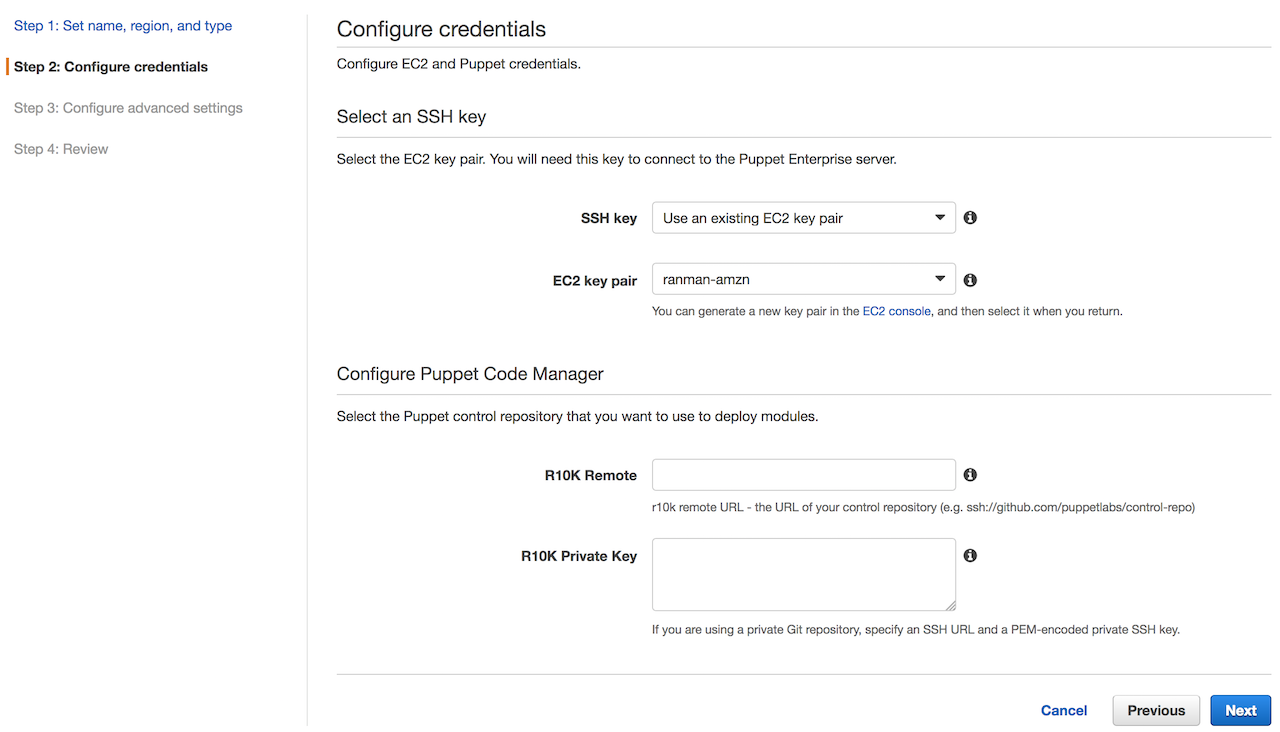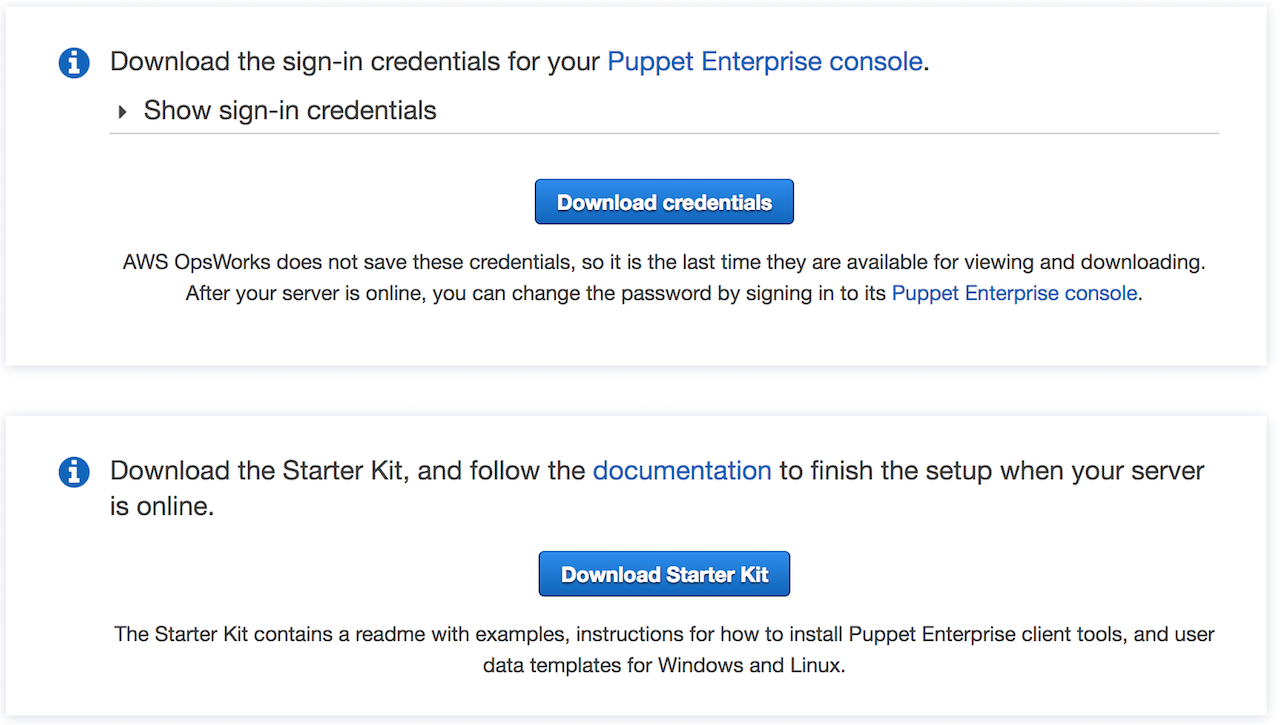AWS News Blog
New – AWS OpsWorks for Puppet Enterprise
At last year’s AWS re:Invent we launched AWS OpsWorks for Chef Automate which enabled customers to get their own Chef Automate server, managed by AWS. Building on customer feedback we’re excited to bring Puppet Enterprise to OpsWorks today.
Puppet Enterprise allows you to automate provisioning, configuring, and managing instances through a puppet-agent deployed on each managed node. You can define a configuration once and apply it to thousands of nodes with automatic rollback and drift detection. AWS OpsWorks for Puppet Enterprise eliminates the need to maintain your own Puppet masters while working seamlessly with your existing Puppet manifests.
OpsWorks for Puppet Enterprise will manage the Puppet master server for you and take care of operational tasks like installation, upgrades, and backups. It also simplifies node registration and offers a useful starter kit for bootstrapping your nodes. More details below.
Creating a Managed Puppet Master
Creating a Puppet master in OpsWorks is simple. First navigate to the OpsWorks console Puppet section and click “Create Puppet Enterprise Server”.

On this first part of the setup you configure the region and EC2 instance type for your Puppet master. A c4.large can support up to 450 nodes while a c4.2xlarge can support 1600+ nodes. Your Puppet Enterprise server will be provisioned with the newest version of Amazon Linux (2017.09) and the most current version of Puppet Enterprise (2017.3.2).
On the next screen of the setup you can optionally configure an SSH key to connect your Puppet master. This is useful if you’ll be making any major customizations but it’s a good general practice to interact with Puppet through the client tools rather than directly on the instance itself.

Also on this page, you can setup an r10k repo to pull dynamic configurations.
In the advanced settings page you can select the usual deployment options around VPCs, security groups, IAM roles, and instance profiles. If you choose to have OpsWorks create the instance security group for you, do note that it will be open by default so it’s important to restrict access to this later.

Two components to pay attention to on this page are the maintenance window and backup configurations. When new minor versions of Puppet software become available, system maintenance is designed to update the minor version of Puppet Enterprise on your Puppet master automatically, as soon as it passes AWS testing. AWS performs extensive testing to verify that Puppet upgrades are production-ready and will deploy without disrupting existing customer environments. Automated backups allow you to store durable backups of your Puppet master in S3 and to restore from those backups at anytime. You can adjust the backup frequency and retention based on your business needs.
Using AWS OpsWorks for Puppet Enterprise
While your Puppet master is provisioning there are two helpful information boxes provided in the console.

You can download your sign-in credentials as well as sample userdata for installing the puppet-agent onto your Windows and Linux nodes. An important note here is that you’re able to manage your on-premises nodes as well, provided they have connectivity to your Puppet master.
Once your Puppet master is fully provisioned you can access the Puppet Enterprise http console and use Puppet as you normally would.

Useful Details
AWS OpsWorks for Puppet Enterprise is priced in Node Hours for your managed nodes. Prices start at $0.017 per-node-hour and decrease with volume of nodes – you can see the full pricing page here. You’ll also pay for the underlying resources required to run your Puppet master. At launch AWS OpsWorks for Puppet Enterprise is available in US East (N. Virginia) Region, US West (Oregon) Region, and EU (Ireland) Region. Of course everything you’ve seen in the console can also be accomplished through the AWS SDKs and CLI. You can get more information in the Getting Started Guide.
– Randall